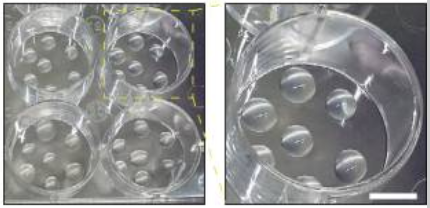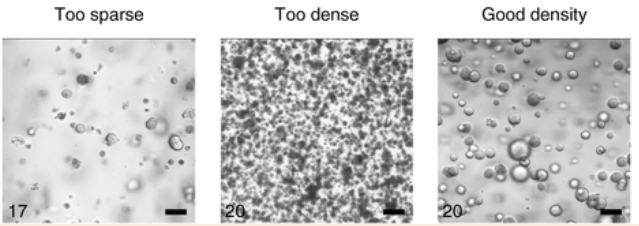How to Prepare Mammary Organoids

Breast cancer (BC) is the most commonly diagnosed malignancy in women globally. A comprehensive understanding of the potential processes underlying normal breast development, carcinogenesis, and disease progression is necessary for designing new personalized therapies. However, the lack of suitable and widely available in vitro models has hindered this process.
Organoids are 3D cell structures cultured in vitro that mimic the cellular architecture of organs in vivo, allowing for more accurate preservation of the biological characteristics and functions of in vivo cells. Mammary organoids can accurately replicate the in vivo breast microenvironment and have been used to examine factors influencing signaling pathways, gene expression, and tissue remodeling.
Cultivation Protocol for Mammary Organoids
We have compiled a cultivation protocol for generating mammary organoids from breast tissue based on two articles published by Clevers H[1][2]. This model can be used for long-term culture of organoids derived from normal human breast tissue or breast cancer tissue.

Figure 1. Process of Breast Cancer Tissue Differentiation into Mammary Organoids (PMID: 33692550)[2]
1. Isolation of Epithelial Cells from Breast Tissue Excisions
1.1 Transfer each tissue sample (<3-4 cm3) into a 50 mL Falcon tube containing D-BSA (DMEM GlutaMAX medium supplemented with a final concentration of 0.1% BSA without fatty acids), and use a surgical blade to cut the tissue into small pieces of 0.5-1 mm3 (the tissue chunks should appear uniform and slightly viscous).
1.2 Wash the tissue fragments several times with D-BSA, let them settle, and then remove the supernatant.
1.3 Add Type I medium, mix well, and then add a final concentration of 1 mg/mL Type II collagenase and 10 μM Y-27632. Digest at 37°C for 1-2 hours.
1.4 Terminate digestion by adding FBS, filter through a 100 μm filter, and centrifuge at 450 g for 5 minutes to remove the supernatant.
1.5 If the precipitate appears reddish, add red blood cell lysis buffer, incubate at room temperature for 2 minutes, then add D-BSA, and centrifuge at 450 g for 5 minutes to remove the supernatant.
2. Organoid Cultivation
2.1 Resuspend the cell pellet in BME (basement membrane extract, or substitute with Matrigel), mix well, and then dropwise seed onto a 12-well plate. Invert and solidify at 37°C.

Figure 2. Representative Images of BME Droplets in a 12-Well Plate (PMID: 33692550)[2]
2.2 Add an appropriate amount of Type I medium (Advanced DMEM/F12, 10% R-spondin1-conditioned medium, 10% Noggin-conditioned medium, 1× B27+VitA, 10 mM Nicotinamide, 1.25 mM N-acetyl-L-cysteine, 100 μg/mL Primocin, 5 μM Y-27632, 5 nM Heregulin B1, 5 ng/mL FGF-7, 20 ng/mL FGF-10, 0.5 μM A83-01, 5 ng/mL EGF, 1 μM SB202190) or Type II medium (Advanced DMEM/F12, 20% Wnt3a-conditioned medium, 10% R-spondin1-conditioned medium, 10% Noggin-conditioned medium, 1× B27+VitA, 10 mM Nicotinamide, 1.25 mM N-acetyl-L-cysteine, 0.5 μg/mL Hydrocortisone, 100 nM β-estradiol, 10 μM Forskolin, 100 μg/mL Primocin, 5 μM Y-27632, 5 nM Heregulin B1, 20 ng/mL FGF-10, 0.5 μM A83-01, 5 ng/mL EGF) and continue cultivation in a 37°C and 5% CO2 incubator. Change the medium every 2-4 days. Passage the organoids after 7-21 days.
Figure 3. Bright-field Images of Mammary Organoids Obtained with Type I or Type II Medium (PMID: 33692550)[2]

Figure 4. Representative Bright-field Images of Mammary Organoids, Too Sparse (Left), Too Dense (Middle), or Optimal Density (Right) (PMID: 33692550)[2]
Related Products
|
Product Name |
Catalog Number |
Specifications |
| 3DCultr Breast Cancer Organoid Growth Medium(Human) | C231109 | 50/100/500 mL |
|
Recombinant Human EGF Protein |
C230328 |
100/500 μg |
|
Recombinant Human FGF-10 Protein, His Tag |
C230418 |
5/100/500 μg |
|
Recombinant Human KGF/FGF-7 Protein |
C230417 |
10/100/500 μg |
|
Recombinant Human NRG1-beta1 Protein |
C230454 |
10/100/500 μg |
